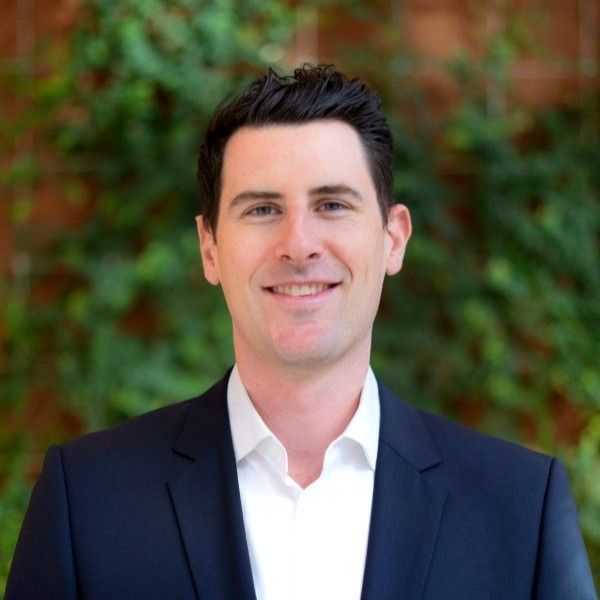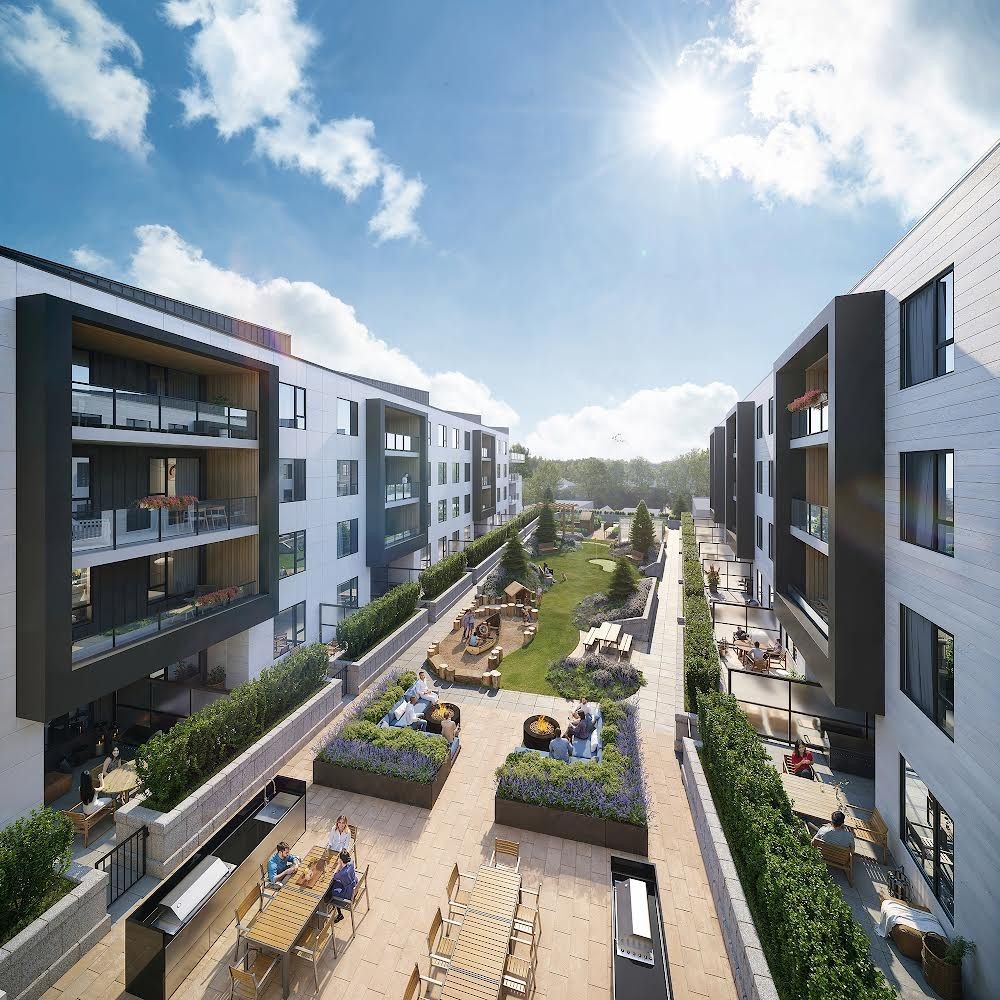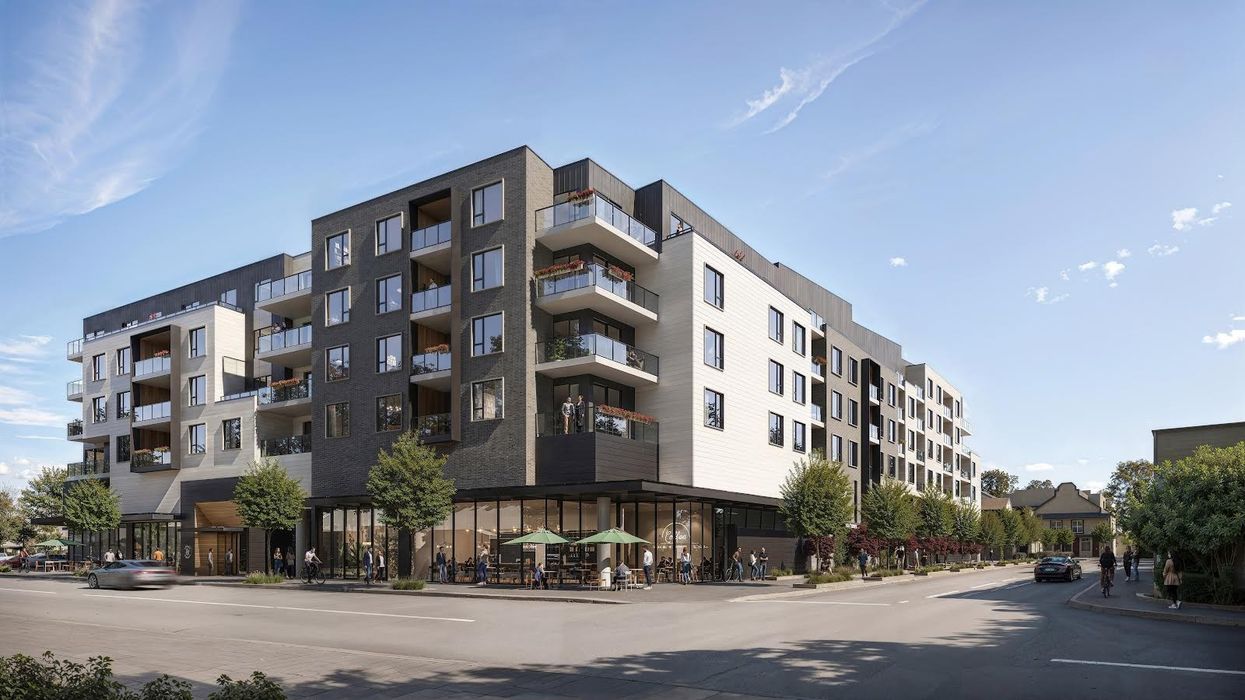To the south of Vancouver, at the point where the Fraser River empties into the ocean, there is the small heritage fishing village of Ladner, which is part of the city of Delta.
The census puts the population of the village at around 24,000 people, surrounded by farms and situated on a flood plain. Most people drive by it on their way to the Tsawwassen ferry terminal, and that’s fine by villagers, who, generally, would rather not become another gentrified municipality with unaffordable prices and a lot of concrete towers. Until recently, condominiums in the historic town have been pretty much non-existent.
Headwater Projects, a real estate investment firm that’s been around since 2008, heard that the city was amending its official community plan to allow for more density, up to six storeys. Now that their 131-unit, six-storey mixed-use Bridge & Elliott project has been approved, it enters the marketing phase. In development world, it’s as good a timeline as it gets, an illustration of a streamlined process that could be starting construction within four years. And that includes significant public engagement and an effort to connect with the residents, even the ones who were in opposition.
The City of Vancouver, which has separate departments for rezonings and development applications, should take notice.
Headwater vice president McGregor Wark says they’d had their eye on Ladner for some time before they heard that the city was finally looking at increasing densities. Polygon Homes has a large multi-phase townhouse community underway, but it’s outside the village and on the waterfront. The village proper hasn’t seen a multi-family project in years.
“There hasn't been much in terms of development within Ladner, and that's solely been based on the fact that the official community plan provided densities that just didn't make sense,” says Wark. “You couldn't underwrite a development properly to make it pencil, and so it's kind of prohibited people going in and developing. We were fortunate, because we heard that there was an opportunity for an OCP amendment for them to increase densities within the village.”
Headwater’s business model is to develop wood-frame condominiums and rental apartments, and to buy and hold income-producing assets for their team of investors, as a long-term income stream. Most of their 25-plus holdings are apartment buildings and shopping centres located throughout the Lower Mainland, on Vancouver Island, and in the US. It’s a conservative model that is proving especially prudent in a high-interest rate climate.
For example, Headwater has a few older apartment buildings in Vancouver’s Broadway Plan area, which the city is promoting for redevelopment. But the company is under no pressure to apply to rezone any of the buildings anytime soon, says Wark.
“We run a bit of a broader spectrum than most since we invest and hold and also develop,” he says.

“With our assets, we bought them with the intent of looking at them as carrying income as opposed to development, but hopefully with the opportunity to develop down the road. When we look at our assets now on the Broadway corridor, I'd suggest that they're probably more valuable as an income property than they are to develop at this time, in our mind.
“I think you're going to see a lot more people focus on income right now, just based on the risk involved.”
Headwater purchased four properties on Bridge and Elliott streets in Ladner three years ago, shortly before the Ladner Village Official Community Plan Update had passed. They applied to rezone and develop the four consolidated properties and a lane. Unlike Vancouver, the city of Delta allows rezoning applications to be made concurrent with development applications, which greatly streamlines the process.
“We went through multiple iterations of our design, taking into consideration people's concerns,” says Wark.
“We spent a lot of time working not only with the people that supported, but also with the people that were against the project, just to show them that we were willing to listen and have a have a dialogue. I mean, a lot of the existing buildings, there are two story, and one-story buildings, so coming in with a six-story building was a drastic change.”
Because they are dealing with a flood plain, the two levels of parking must be above ground. The geotech required to go below ground is cost prohibitive. And in the current climate, margins are tight.

“Our carrying costs that we have now are much higher than what they were when we forecasted the project several years ago, when we purchased it,” says Wark.
The company has already launched presales and hopes to break ground in January. One-bedroom units start somewhere in the high $500,000 range, and to show their commitment to the area, they gave Delta residents first dibs. To obtain financing, the developer must sell 60% of the building in 12 months, and so far, the locals have shown a lot of interest, including investors buying for their grown children or to downsize one day. They are building slightly larger units to accommodate those boomer age buyers. Wark wasn’t yet ready to say how many units they’ve sold.
“It’s not your typical investor that’s buying with the idea of just renting it out for forever. It's not just an income play.”
“We still consider ourselves to be growing,” he says of Headwater in general. “And we've got big goals for ourselves to continue to grow in both income and development. I think although the market's challenging right now we're a pretty small and nimble company and our goals are to find different ways to approach the market to ensure growth. So, I think we're still excited about the opportunity for the Lower Mainland and growth further abroad.”





















